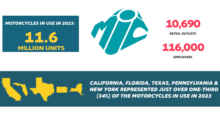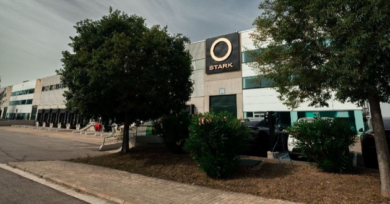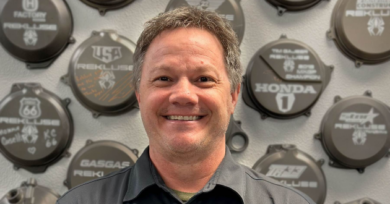Maya 3: Overnight Credit-bility
By Neil Pascale
Editor
CLEMMONS, N.C. — Jack Snow, who runs a business based on a belief that bad things happen to good people, is living proof that good things can happen in bad times.
Some 30-plus years ago, Snow put on his best suit — his only one — and left his pregnant wife at home to venture a few miles away to downtown Winston-Salem, N.C. There, hundreds were lining up for a job opening, a position that could mean so much to a growing family in 1973, a time that would later be referred to as the worst recession since World War II.
Snow came to the interview with neither a college education nor any experience for what the job entailed — accounting. “Well, what are you doing here?” the person interviewing him candidly asked.

That same question was probably asked of Snow some 30 years later when the executive of Sheffield Financial, a small, retail lending firm from central North Carolina, came calling to the industry’s largest manufacturers.
“Sheffield who?” they would ask.
In fact, that question was likely repeated many times over in early 2009 when the company known primarily in the outdoor power equipment industry became a major powersports lending presence nearly overnight. Sheffield Financial signed four major brands in early 2009, another recession-wracked year that has since been compared to the 1973-’75 time period.
Whereas in 2009 when some traditional powersports lenders were stepping back in a tremendously difficult economy, Sheffield stepped up. By one industry survey’s account, Sheffield made the biggest market-share jump of any lender in the market in the past year.
And the sudden emergence of Sheffield as a major industry player figures only to grow in the coming year. The company that recently surpassed the $1 billion mark for its 18-year history of consumer lending figures to meet or exceed that seven-figure amount in 2010 alone.
For that emergence and continued sustained growth in an incredibly difficult retail climate, Sheffield’s Snow has been named by Powersports Business as its 2010 Executive of the Year. Snow becomes the first financial sector executive in the award’s 10-year history to be honored.
A small fish
As evidence by his office’s décor, including a painting depicting two energetic hunting dogs, Snow is as much hunter and fisherman as is he financier. Thus, when discussing the past year, Snow takes on a little bit of a fisherman’s embellishment in discussing what proved to be just the first of several big fish he landed in 2009: American Suzuki Motor Corp.
“I’ll be honest with you, when I first started seeing the (Suzuki consumer) applications come in here, I said, ‘Oh my Lord, what have we got into?’” Snow said.
He was referring to the young clientele that so often is attracted to Suzuki’s popular sport bikes and how they differ demographically from Sheffield’s previous clientele. The company, started originally by Jack’s wife, Bonnie, began in the commercial lawnmower segment, an industry Snow learned through a previous business he owned.
Sheffield Financial began in 1992 with a business model plan developed by Bonnie Snow. A North Carolina investor committed $1.5 million to the burgeoning business, and Snow used that to borrow $4 million from a national banking firm, BB&T. Sheffield did $4 million in business that first year and continued to drive business growth until one of its “catches” attracted a bigger and more dangerous fish.
Jack Snow, who began with the company shortly after his wife started it, landed the retail financing account for Bush Hog mowers, a business that had primarily been handled in the past by one of the world’s largest banks. “The president of their finance division called and said we’re either going to buy you out or put you out of business,” said Snow, who took the bank’s threat seriously enough to contact BB&T, the North Carolina bank.
“I called BB&T and said I’m going to sell this thing and I’m not going to work anymore,” Snow said. “And they said, ‘Well, how about selling it to us and you stay on and we’ll let you run it. We won’t bother you and give you all the money you need. So I did.”
At the time, in 1997, Sheffield Financial had 13 employees and was doing about $40 million in business annually. All of that business came from the commercial lawnmower market until approximately five years ago when Snow sought to enlarge Sheffield’s niche.
To do that, he stayed in the outdoor equipment area, this time turning to powersports and specifically Arctic Cat.
“They took a chance on us,” he said of the Minnesota manufacturer. “They really did.”
For Sheffield, the jump to financing ATVs and snowmobiles was not a big one, as the customer demographic didn’t change dramatically. “Basically people like myself,” Snow said, “just good folks who want to finance a $8,000-$10,000 vehicle.”
The first year with Arctic Cat, Sheffield financed more than $100 million in loans.
“The credit looked good, the bad debt was acceptable,” Snow said of the Arctic Cat powersports business. “I liked the dealer network — they’re my kind of people. I don’t want to say good ol’ country folks, but they were people you could talk to.”
The first-year results served as an initiative for Snow to consider the future, and a precursor to what would become one of the biggest headlines of 2009: Sheffield’s dramatic and speedy rise to becoming a major retail lender.
Not an ‘overnight deal’
To find out how staggering a change was experienced in the powersports consumer credit market in 2009, ADP Lightspeed conducted a study later that year for Powersports Business that examined retail lending market share. The survey examined more than 500,000 loans from 2006-’09 that accounted for more than $4 billion in sales from metric dealerships. The results? Sheffield wasn’t even a blip on the survey in 2006, but by the winter of 2009 commanded the third highest market share at 12 percent, behind American Honda Finance and HSBC. The 12 percent market share gain, however, was the largest in the industry.
That tremendous gain was a result of a series of announcements the company made in the first quarter of 2009. In a matter of months, the North Carolina-based company announced the signing of Suzuki, Kawasaki, Polaris Industries and BRP.
“Even a country boy like myself can figure this out,” Snow said of the industry’s changing retail lending landscape. “You have the whole United States here and there are only three national finance companies. Sooner or later, I’m going to get some of that business. And if I can get just one, I’ll get two and three as long as I give them the best possible service they can possibly get. So I knew it was just a matter of time and BB&T knew that was going to happen.”
Snow insists what looked like a well-choreographed dominoes move was hardly something done in a matter of weeks.
“This wasn’t an overnight deal,” Snow said, noting he called on Suzuki and the other OEMs for several years before the 2009 deals were struck. “I told them (BB&T) five years ago that I was going to get the Suzuki business, and every single quarter Suzuki, Polaris, Kawasaki, BRP all the powersports OEMs came up in our conversations. So it was no surprise to them.
“It was a big surprise that it all came at one time. We thought we were going to get Suzuki and two years later we would get Kawasaki. But it all came at once.”
Dirk Gould, finance manager of American Suzuki Motor Corp.’s powersports division, notes the timing of Sheffield’s entry into the motorcycle market was particularly important for Suzuki.
“For us, it was huge,” he said. “To be able to move to Sheffield in an uncertain economy and to go with a new lender that had a fresh view of the industry and they were willing to try some different things … that was really great for us.
“For the industry as a whole, it’s a good thing because it steps up the competition, brings another lender into the industry and the other guys have taken note of that,” Gould said. “If you talked to those lenders in the peak, I don’t think they believed that could happen — that another lender could come in and do that. But with all the dynamics of the economy, it just worked in Sheffield’s favor.”
Changes
That’s not to say the conversion to the motorcycle industry was an especially easy one.
“It was a challenge to take our business philosophy and move from one industry to another,” Snow said, noting the particular difficulty of moving to the motorcycle market. “They were similar, but they were very, very different. So we struggled at first.”
And it started with Sheffield’s loan approval percentage, a particular vexing issue for a company Snow said prides itself on “trying to make a loan.
“When the (motorcycle) applications started coming in here,” Snow said, “it was deny, deny, deny, deny.”
Then there was the matter of the actual loan approvals that went back to the dealers.
Snow tried to echo what his grandfather once did at every gas station he owned in Clemmons, N.C. — provide that extra bit of service. At the gas stations, it was a piece of bubble gum for every child who walked through the door. “And that’s what I was trying to do for dealers,” Snow said. “I was trying to do everything for them. We did all of the paperwork.”
Dealers, however, were taken back by receiving a fully completed loan before they had the opportunity to sell other profitable items to the consumer.
“Dealers said, ‘Wait a minute, I haven’t sold them an extended warranty,’” Snow said. “‘I haven’t sold a helmet and other things. And now I have to call you back and I have to cut another contract.’ That was a big problem because I thought I was doing the right thing, and actually I was doing the wrong thing. So we changed that very quickly.”
Sheffield also worked internally and with its new OEM partners to improve its approval percentage rates on motorcycle loans. One of the first moves the company made was installing a loan rejection policy, which ensured at least two managers would review a rejected loan.
“When in doubt, deny is an easy button to hit,” Snow said of the reason for the change.
“I met with all of our folks and said we have got to take more risk. I understand this customer we wouldn’t finance with a lawnmower — still won’t — but let’s give him an opportunity to ride a motorcycle.”
Besides more carefully reviewing rejections, Sheffield also doubled its collections staff so it could increase communications with its new motorcycle buyers. Those communications include an initial phone call to review the terms of the new loan as well as possible future reminders on upcoming payments.
“We may even send them a notice before (their monthly payment is) even due, saying, ‘Guess what, you got a payment coming up,’” he said.
Sheffield also worked with the OEMs to improve approval percentages for “thin file” consumers, those consumers who don’t possess much of a credit history and thus are viewed as a higher risk.
“Upon realizing that this risk was greater, they didn’t mind paying us more for that risk,” Snow said of the OEMs. “So we did increase our fees to the manufacturer for that risk. Therefore we had more money that we could reserve for bad debt. Now having said that, we and the OEMs decided we weren’t going to take bad credit. It doesn’t matter how much money you pay, bad credit is just bad credit, and we’re just not going to take it.”
The Sheffield model
Even with those significant changes, Snow says Sheffield has remained consistent with its primary business model — its system of deciding which consumers are given loans. The system, principally unchanged since its inception in 1992, is markedly different from the computer-scoring models other lenders use, Snow says.
“I can look at your credit and it can tell me through sophisticated scorecards what’s the probability of you paying me back that loan,” he said of competitors’ credit-scoring models. “I think there is something terribly missing (in that system) and that is the character of the individual. So it’s our job in 15 minutes to look at your application and try to determine the character of that individual. Is his character that he will pay you no matter what? That’s the guy I want to finance, regardless of what his credit score is. So our model leans more toward stability of the customer than the credit of the customer. Now we do look at credit, don’t get me wrong, but we have a philosophy that bad things happen to good people.”
Together with that unique lending model are some fundamentally different or rare core business practices. For example, Sheffield does not have a voice mail system for its employees.
“I don’t believe in e-mails and I don’t believe in voice mails,” Snow said. “We have a rule around here: If you send an e-mail, that’s fine, but it better have a report attached to it. If not, then pick up the phone or just go visit with the person.”
Meetings are equally rare. “You can go have all the meetings you want. The only rule is: You have it before 8 a.m. or after 5 p.m.,” Snow said.
Why? “I like people to talk to people and I want people to make decisions,” he said. “We empower everybody in this building to make a decision. Make a decision. If it’s the wrong one, make another one as quick as you made the first one. Do what you’re paid to do and that is to make a decision.”
It’s a system that has more than its share of believers.
Eric Bondy, CEO of KYMCO USA, brought Sheffield Financial to KYMCO as one of the first steps he made when he came to the company from Arctic Cat in 2004.
“I had a longstanding relationship with Jack and J.C. (Hendrix, Sheffield Financial’s chief sales and marketing officer) at Sheffield. They were great people to work with,” Bondy said. “They had just a phenomenal working relationship with not only the manufacturers, but with the customers they did business with as well so they were somebody I certainly wanted to associate with.”
Volume
Even though Snow and Sheffield had worked for years to sign some of the industry’s largest accounts, the speed in which their business multiplied in 2009 was even shocking to the company’s staff. Snow said that was evident after Suzuki had come onboard and the lending company was suddenly drawing interest from other prominent OEMs.
“I told all of our managers, ‘We’re going to take on BRP,” Snow said. “And they said, ‘Have you lost your mind? How much volume do you think we can handle?’”
That’s a question that may not be fully answered yet. In mid-April, the company surpassed a notable milestone — it exceeded more than 10,000 loan applications in one week alone.
That’s quite the achievement, even for a guy who in the height of the 1973 recession stood for hours in line before somehow, someway landing a job without an ounce of experience.
“Before I left that day,” Snow recalls of the incident and his interviewer’s final question, “He said, ‘Can you run a calculator?’ I didn’t even know what a calculator was.”








